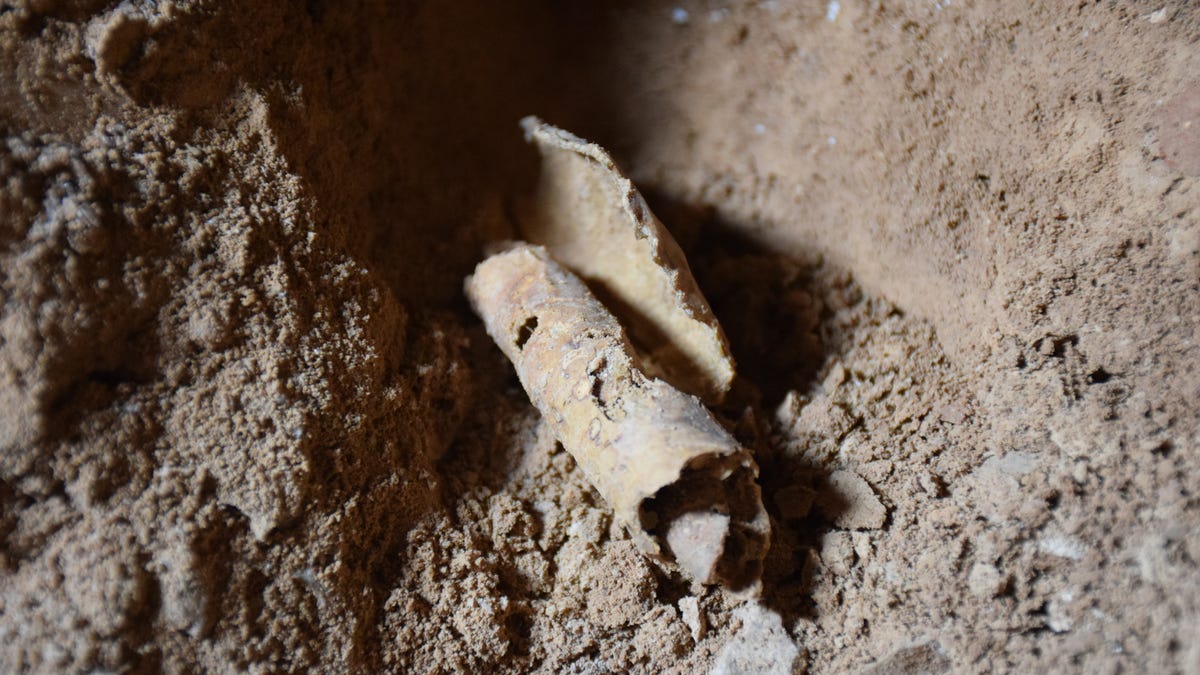Dead Sea Scrolls mystery unfurls as scientists find hidden cave
The discovery of yet another cave thought to have contained the historically significant ancient documents also turns up evidence they were stolen.
An exciting archaeology discovery announced this week hinges not only on what scientists found, but on what was missing.
Archaeologists from Israel and the US have uncovered evidence of a cave thought to have housed Dead Sea Scrolls, a collection of hundreds of historically significant ancient manuscripts. They also found evidence the scrolls were stolen.
Cloth used to tie the now-missing scrolls.
Until now, scientists believed only 11 caves had contained Dead Sea Scrolls, which date from around 250 B.C. to A.D. 68 and contain early copies of the Hebrew Bible and biblical commentary, plus calendars, astronomical charts, hymns, community rules and battle plans that offer insight into life at the time.
The discovery of a 12th Dead Sea Scrolls cave "is one of the most exciting archaeological discoveries, and the most important in the last 60 years, in the caves of Qumran," Hebrew University archaeologist Oren Gutfeld said in a statement.
The first batch of scrolls were found in the late 1940s by a bedouin shepherd, who, the story goes, tossed a rock into a cave and heard the sounds of pottery shattering. The next nine years brought more scroll discoveries in the Judean desert.
Decades later, excavating a cliffside cave near the northwestern shore of the Dead Sea, the scientists from Hebrew University and Virginia's Liberty University found broken storage jars and lids from the Second Temple period (530 BC to 70 CE) hidden in niches along the walls and deep inside a tunnel in the back.
The tunnel also contained iron pickax heads from the 1950s that the archaeologists say point to a heist of the texts, which were written on animal skin and papyrus in Hebrew and Aramaic, with a few in Greek.
"Although at the end of the day no scroll was found, and instead we 'only' found a piece of parchment rolled up in a jug that was being processed for writing," Gutfeld said, "the findings indicate beyond any doubt that the cave contained scrolls that were stolen."
The findings also include fragments of cloth and string that tied the scrolls and a piece of leather that was part of a scroll. The team also found flint blades and arrowheads dating back to prehistoric times.
So where are the missing scrolls? We'll have to wait for that mystery to unfurl -- if it ever does.
The discovery of the 12th cave emerged from the first excavation of "Operation Scroll," a large-scale search for undiscovered Dead Sea Scrolls.
"The important discovery of another scroll cave attests to the fact that a lot of work remains to be done in the Judean Desert and finds of huge importance are still waiting to be discovered," said Israel Hasson, director general of the Israel Antiquities Authority. "We are in a race against time as antiquities thieves steal heritage assets worldwide for financial gain."
Batteries Not Included: The CNET team shares experiences that remind us why tech stuff is cool.
CNET Magazine: Check out a sampling of the stories you'll find in CNET's newsstand edition.


